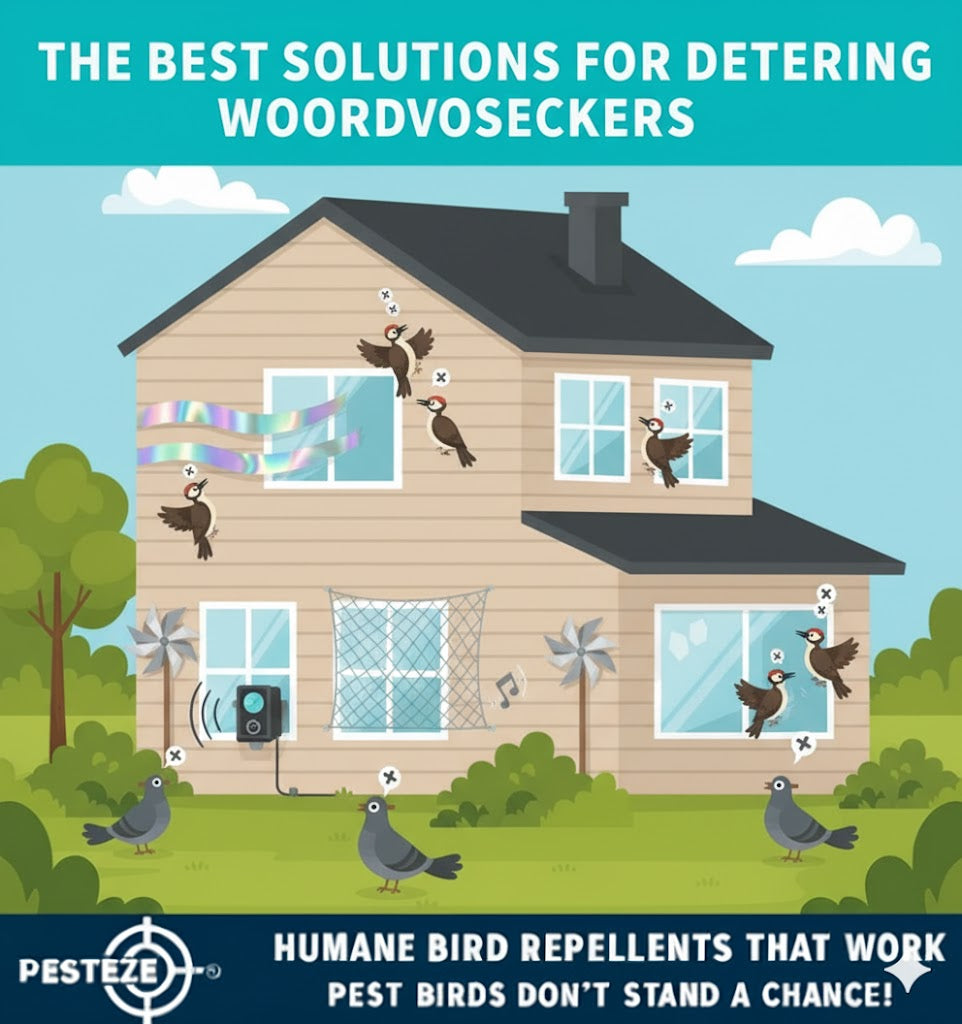THE BEST SOLUTIONS FOR DETERRING WOODPECKERS

THE BEST SOLUTIONS FOR DETERRING WOODPECKERS
SUMMARY
Woodpeckers can cause significant damage to siding, eaves, and trees while searching for insects or creating nesting sites. Using humane deterrents, physical barriers, and behavioral strategies can protect property without harming the birds.
FEATURES
Humane Solutions: Deter woodpeckers safely without injury.
Property Protection: Prevents damage to siding, roofs, and trees.
Low Maintenance: Durable methods require minimal upkeep.
Cost-Effective: Affordable options for homeowners and property managers.
Easy Installation: Quick setup for physical and visual deterrents.
Eco-Friendly: Avoids poisons or harmful chemicals.
Versatile Application: Suitable for homes, barns, decks, and gardens.
Long-Term Effectiveness: Combines multiple strategies for lasting results.
GUIDE DESCRIPTION
Woodpeckers often peck at wood siding, fences, or trees in search of insects or to establish nesting sites. While their natural behavior is harmless to the bird, it can lead to costly property damage. To deter woodpeckers effectively, it’s important to combine physical, visual, and behavioral strategies.
Physical barriers are among the most reliable solutions. Installing netting over affected areas, attaching metal flashing around vulnerable wood, or using plastic or vinyl covers on exposed surfaces can prevent pecking. In gardens, wrapping young trees with protective mesh or tree guards stops woodpeckers from damaging trunks.
Visual deterrents can help reduce woodpecker activity. Hanging reflective tape, shiny pinwheels, or predator decoys such as hawks or owls near frequently targeted areas makes woodpeckers wary. Moving these deterrents occasionally prevents birds from becoming habituated.
Sound deterrents like motion-activated noisemakers or ultrasonic devices can be effective for some woodpecker species. These devices create sudden, unfamiliar sounds that discourage birds from lingering.
Behavioral strategies include providing alternative food sources, such as suet feeders placed away from the house or trees, to redirect the birds’ attention. Removing insect infestations from siding or trees reduces the woodpeckers’ incentive to peck.
Regular monitoring is essential. Inspect affected areas for new damage, ensure deterrents remain in place, and rotate visual or sound deterrents to maintain their effectiveness. Combining multiple approaches typically provides the best results, protecting property while respecting wildlife.
By using these humane strategies, homeowners can minimize damage from woodpeckers, maintain the integrity of buildings and trees, and coexist safely with these active and fascinating birds.
- Smrithi Art


Comments 0